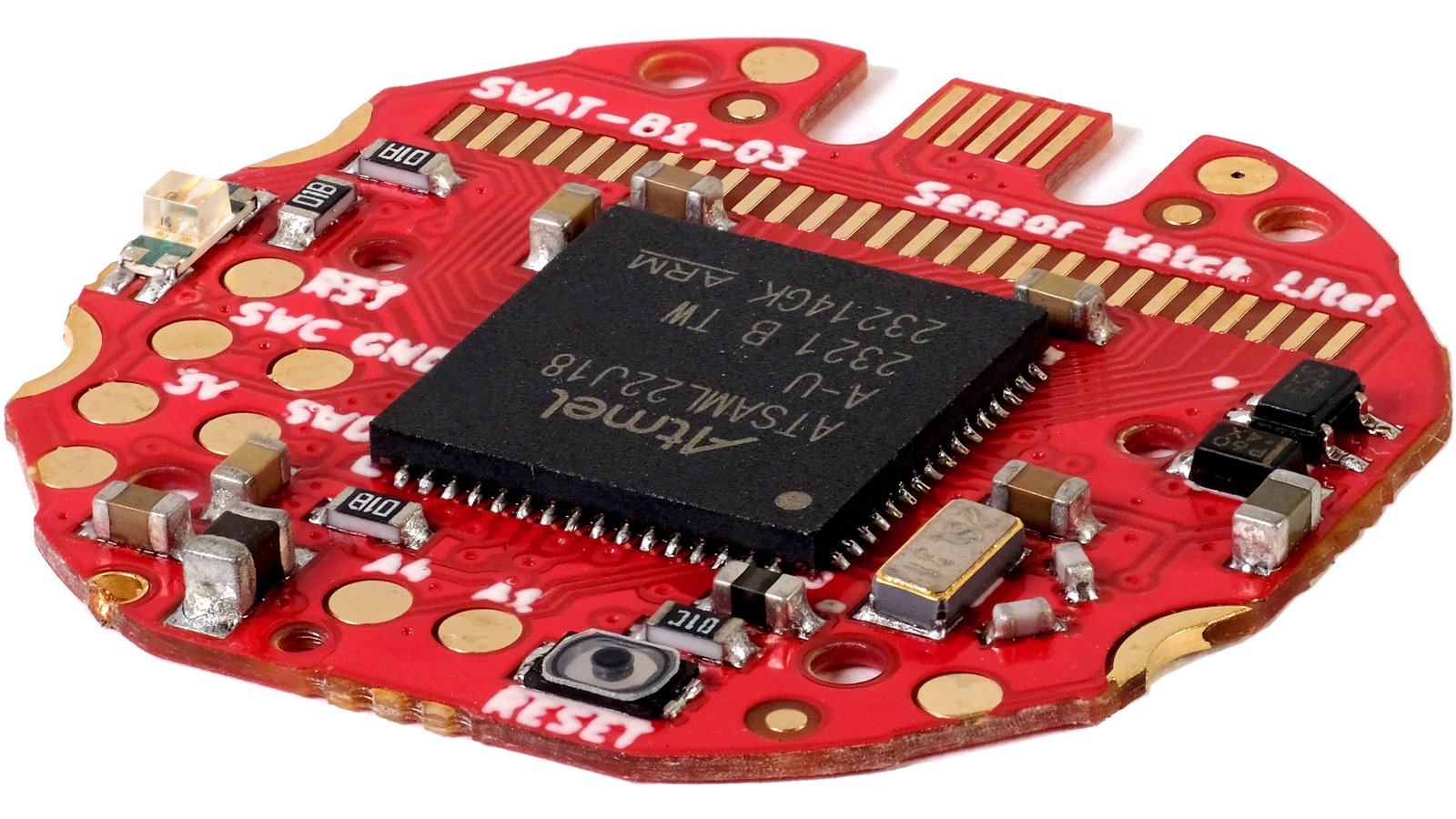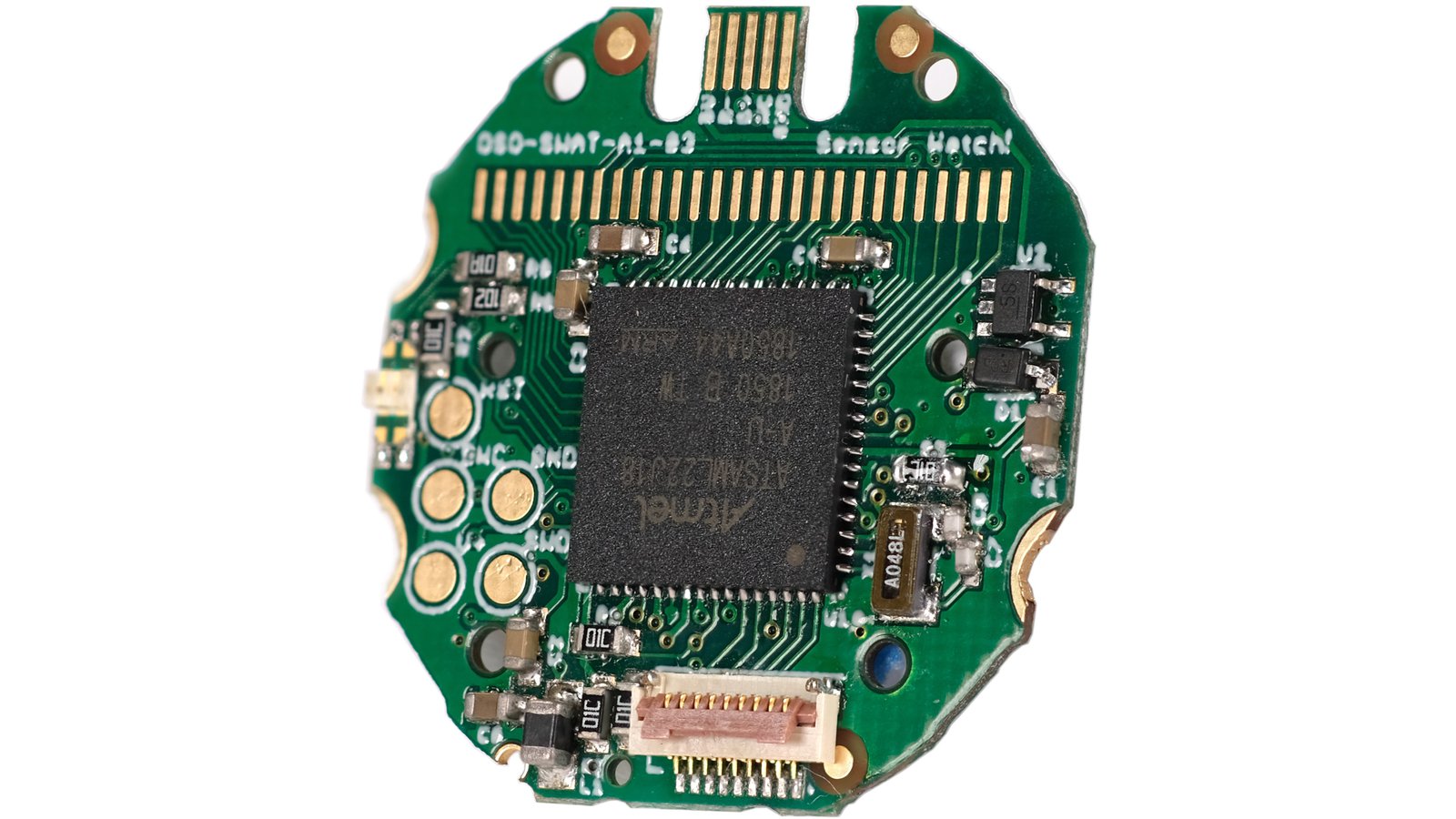Oddly Specific Objects
Mobile Devices
ARM
Oddly Specific Objects
Mobile Devices
ARM
Sensor Watch is a bridge between eras. It takes an iconic 30-year-old design from a golden age of digital watches, and pairs it with a modern, powerful microcontroller. This small circuit board, less than an inch in diameter, replaces the original quartz movement in a Casio F-91W or A158W watch to put the capabilities of an ultra-low-power ARM Cortex M0+ microcontroller on your wrist.
Sensor Watch Lite is everything you loved about Sensor Watch, streamlined into one simple board.
Sensor Watch is not like most smart watches. It makes a different set of engineering tradeoffs, to achieve a different set of goals:
The community Sensor Watch firmware (called Movement) comes pre-loaded on every Sensor Watch Lite board, and includes useful features for timekeeping and keeping tabs on the sun and moon:
But this is just the beginning. Several alternate firmware images offer additional features:
You can also build your own firmware to take advantage of even more watch faces:
More importantly: Sensor Watch is open source and easily hackable, which means you can write the apps that make sense for YOU. Do you want a watch face that can predict satellite passes? A transit face programmed with train arrivals for your nearest subway station? An astrology face that can tell you if Mercury is in retrograde? These are all watch faces that you could write for Sensor Watch.
For the first run of Sensor Watch, we included a nine-pin connector for interfacing with sensor boards. But the truth is, we only had a temperature sensor board available at first, and the vast majority of folks only ever made use of that board.
For Sensor Watch Lite, we’re bringing that temperature sensor onto the Sensor Watch board itself, and dispensing with the complexity of the nine-pin connector. This allows us to hit an affordable price point. The old setup ran you $40: $36 for the main board plus $4 for the temperature sensor, whereas the new board with integrated temperature sensor is just $39!
We’re also breaking out two test points from the nine-pin connector, pins A1 and A4. You can use these pads as analog inputs, digital IO (with PWM), or a UART for serial commiunications. Pin A4 can even wake from the ultra-low-power BACKUP mode.
The SAM L22 microcontroller at the heart of Sensor Watch is an ARM Cortex M0+ chip with 256 KB of Flash and 32 KB of RAM, running at up to 32 MHz. It’s similar in many ways to the SAM D21 you’d find in a Feather M0 or Arduino Zero, with many of the same versatile peripherals:
¹ The piezo buzzer is the only piece that requires soldering. You will need to remove a metal piece from your donor F-91W or A158W and solder it to the Sensor Watch board. If you don’t feel comfortable doing this, all other features of Sensor Watch will function identically; the watch just won’t beep.
In addition to these familiar peripherals, the SAM L22 packs one less familiar one: a segment LCD controller. This controller speaks the native language of the F-91W/A158W display glass, and it’s the key to the unique low power capabilities of Sensor Watch:
This is not to say there aren’t tradeoffs: the segment LCD in the F-91W and A158W was only designed to display the time, so not every number or letter works in every position. It also cannot display arbitrary images like an e-paper display or LCD matrix. Still, with a bit of creativity, you can create a watch face that displays quite a lot of information, and carry it with you all year long.
The A1 and A4 test points offer some additional functionality:
| Sensor Watch | Watchy | PineTime | BangleJS | |
|---|---|---|---|---|
| Manufacturer | Oddly Specific Objects | SQFMI | Pine64 | Espruino |
| Sensors | 12-bit ADC and exposed I²C pins, options for more on 9-pin connector | Accelerometer | Accelerometer + Heart Rate | Accelerometer + Magnetometer + Heart Rate + GPS |
| Programming Interface | Built-in USB | Built-in USB | External pogo pins | Bluetooth |
| Watch Size (in case) | 34.5 mm × 37.5 mm | 44 × 49 mm | 37.5 × 40 mm | 50 × 50 mm |
| Thickness (in case) | 8.5 mm | 15 mm | 11 mm | 17 mm |
| Battery Life | 1 Year (estimated) | 2-7 days | 1 Week | 1 Week |
| Design Files Available | Yes | Yes | Schematic Only | No |
| Display | Low-power 72-segment LCD | 1.54” 200x200 E-Ink | 1.3" 240×240 LCD | 1.3" 240x240 LCD |
| Buttons | 3 | 4 | 1 | 3 |
| Water Resistance | 30 meters | No | 1 meter | 10 meters |
| Connectivity | Minimal | Wi-Fi + Bluetooth | Bluetooth | Bluetooth |
| Price | ~$58 ² | $59 | $27 | $95 |
² $39 Sensor Watch Lite board + the cost of an F-91W
And please feel free to reach out using using the Ask a technical question link below!
"Casio's famed F-91W watch, beloved of terrorists, is the frequent subject of ingenious modifications, including a full smartwatch conversion. Now you can purchase a kit board you can swap in yourself to give the zillion-selling timepiece superpowers."
Produced by Oddly Specific Objects in Brooklyn, NY, USA.
Sold and shipped by Crowd Supply.

A Cortex M0+ board swap for the Casio F-91W wristwatch with a built-in temperature sensor

One circuit board to swap into a Casio F-91W or A158W wristwatch.

A sensor board—for the original Sensor Watch—with a thermistor temperature sensor and six test points that break out the I²C bus, two GPIO pins, 3 V power, and ground.

We create comprehensible open source designs that democratize the knowledge required to create useful technology. Read: we make stuff, then we tell you how we did it so that you can do it too.